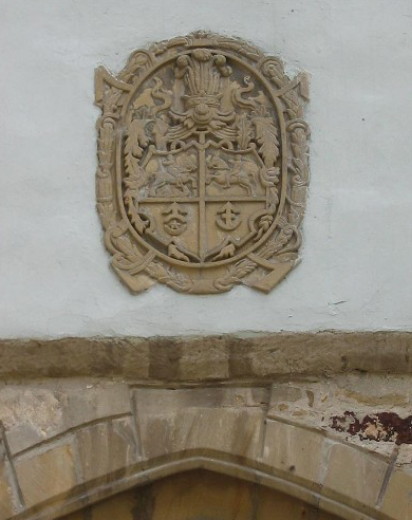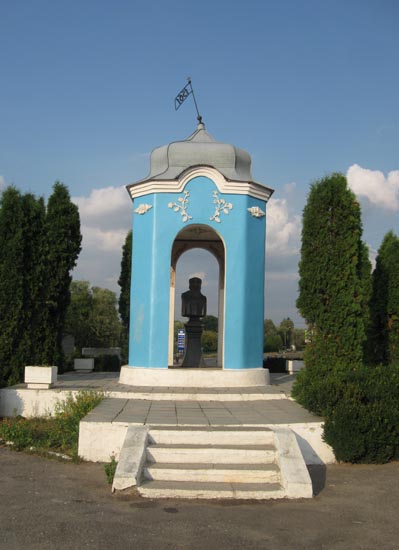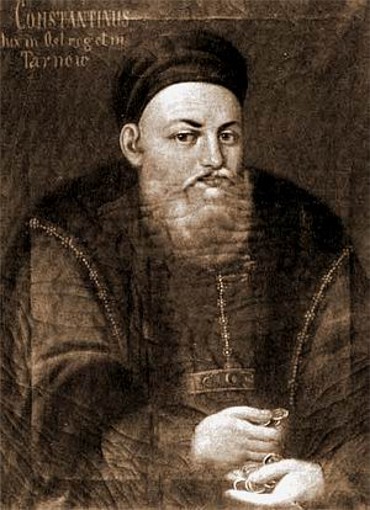Ostrozky, Kostiantyn Vasyl
Ostrozky, Kostiantyn Vasyl [Острозький, Костянтин Василь; Ostroz'kyj, Kostjantyn Vasyl'; Polish: Ostrogski, Konstantyn; Lithuanian: Ostrogiškis, Konstantinas], b 1526 or 1527 in Dubno, Volhynia, d 23 February 1608 in Ostroh, Volhynia. Ukrainian nobleman and political and cultural figure; the son of Prince Kostiantyn Ostrozky; starosta of Volodymyr-Volynskyi and marshal of Volhynia from 1550, voivode of Kyiv from 1559, and senator from 1569; the most powerful magnate in Volhynia and one of the most influential figures in the Lithuanian-Ruthenian state and Polish-Lithuanian Commonwealth. He was a candidate for the Polish throne after the death of Sigismund II Augustus (the last member of the Jagiellon dynasty) in 1572, and for the Muscovite throne after the death of Tsar Fedor Ivanovich (the last member of the Riurykide dynasty) in 1598. Ostrozky defended Ruthenian (Ukrainian and Belarusian) political rights and was the de facto leader of Ukraine in the negotiations leading up to the 1569 Union of Lublin, during which he demanded that Ruthenia be treated as an equal partner of Poland and Lithuania. A generous patron of Ukrainian culture and an ardent defender of the Orthodox faith, he organized and led the resistance to the 1596 Church Union of Berestia. Although he was not opposed in principle to Orthodox-Catholic unification, he felt that it had to be an open, ecumenical process involving secular church patrons, not just a secret clerical accord.
Ostrozky was an important figure in the 16th-century Ukrainian cultural and national rebirth. He established schools in Turiv (1572), Volodymyr-Volynskyi (1577), and Ostroh (1590), but is best known for founding the Ostroh Academy (ca 1576), the Ostroh Press (ca 1578), and the press at the Derman Monastery (1602). The Ostroh Bible (1580–1) was printed under his patronage by Ivan Fedorovych (Fedorov). Ostrozky had close contacts and corresponded regularly with leading defenders of the Orthodox faith, such as the Lviv Dormition Brotherhood, Prince A. Kurbsky, and Bishop Hedeon Balaban. Although he helped to suppress the popular uprising led by Kryshtof Kosynsky in 1593, he did little to contain the uprising led by Severyn Nalyvaiko in 1594–6, and he maintained relations with the Ukrainian Cossacks; for those reasons he was condemned by the Polish nobility.
BIBLIOGRAPHY
Metropolitan Ilarion [Ohiienko]. Kniaz’ Kostiantyn Ostroz’kyi i ioho kul’turna pratsia (Winnipeg 1958)
Krajcar, J. ‘Konstantin Basil Ostrožskij and Rome in 1582–1584,’ Orientalia Christiana Periodica, 35 (1969)
Gordon, L. Cossack Rebellions: Social Turmoil in the Sixteenth-Century Ukraine (Albany 1983)
Lubomyr Wynar
[This article originally appeared in the Encyclopedia of Ukraine, vol. 3 (1993).]

.jpg)
.jpg)


